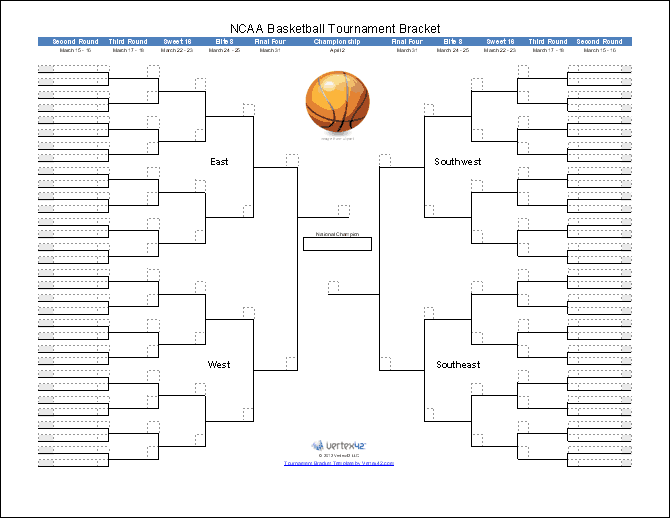March Madness, The Big Dance and Bracket Bewilderment are all names for the NCAA Divison I Basketball Tournament. This is a very big deal. Some 85% of the annual revenues of the National Collegiate Athletic Association (NCAA) are attributable to this three-week event.
And, some 70 million brackets are filled out to commemorate the activities.
Wait a moment. What is a bracket?
Wikipedia defines a bracket as follows: “A bracket or tournament bracket is a tree design that represents the series of games played during a knockout tournament.”
March Madness begins with 68 basketball teams.
In the First Four (an abbreviated play-in round), eight teams play for four spots in the big bracket. You lose, you’re out. That’s why it’s called a Knockout Tournament.
Next, those first four winners fit into the 64 teams in the First Round of The Big Dance. This is the true bracket (The Mighty 64!) and it looks something like four trees on their sides (two the left and two to the right) growing away from the center. Peruse the drawing below — a picture is worth a 1,000 words. Except, in the tournament, the teams are playing from the leaves, down the branches, to the trunks, and finally to the center on the ground. This is part of the wonderful confusion and complexity that is March Madness.

Remember, this is a single-elimination or knockout tournament. So, in the First Round, 64 teams are whittled to 32. Those 32 teams play in the Second Round, where they are carved into 16 teams. These 16 are referred to as the Sweet 16, and things are really getting exciting now. The Sweet 16 grapple and engage. After the hewing and hacking are done, 8 teams remain. These are the survivors, the Elite 8. Down their trees, these 8 fight until only 4 teams are left, the Final Four. Tree-to-tree, trunk-to-trunk, these 4 battle until 2 prevail, touch the solid ground, and advance to the arena of final testing. There, watched by all the teams and fans clinging to their branches above, the 2 wage mighty sport back and forth until the buzzer sounds and The #1, The National Champion, is crowned to the acclaim of all.
Now, that is sports at its best.
Before we leave this spectacle, let’s go back to the start and reflect. Before the first game of the First Four is played, some millions of fans will have guessed who is going to win each of the 67 games that comprise The Big Dance. To do this, they will fill out and submit a completed bracket. Entry is often free and there is at least $1,000,000 pledged to the individual who correctly calls the outcome of each game in advance.
This has never been done.
No one has ever predicted the outcome of all the games.
The odds of picking a perfect NCAA Tournament bracket have been calculated to be 1 in 9.2
Why?
There are just too many variables. It’s not just the number of teams and the number of games. That would simply be mathematics. It’s the players and fans, the arenas and banners, the mascots and cheerleaders, the heating and cooling, the popcorn and hot dogs, the sodas and
It takes my breath away and it should.
It is far too much fun to waste filling out future slots on a static bracket.
Instead, watch the games themselves and add the winners after the contests are completed.
That way you will have a perfect bracket, perhaps a little too late to qualify for the $1,000,000, but who cares — being amused and mesmerized by the real thing is much better than musing the impenetrable.
Take a seat in the stands or lounge there on the couch.
Put away your pen and enjoy the games.
The Dance is about to begin.
I think it already has.
Grandpa Jim
